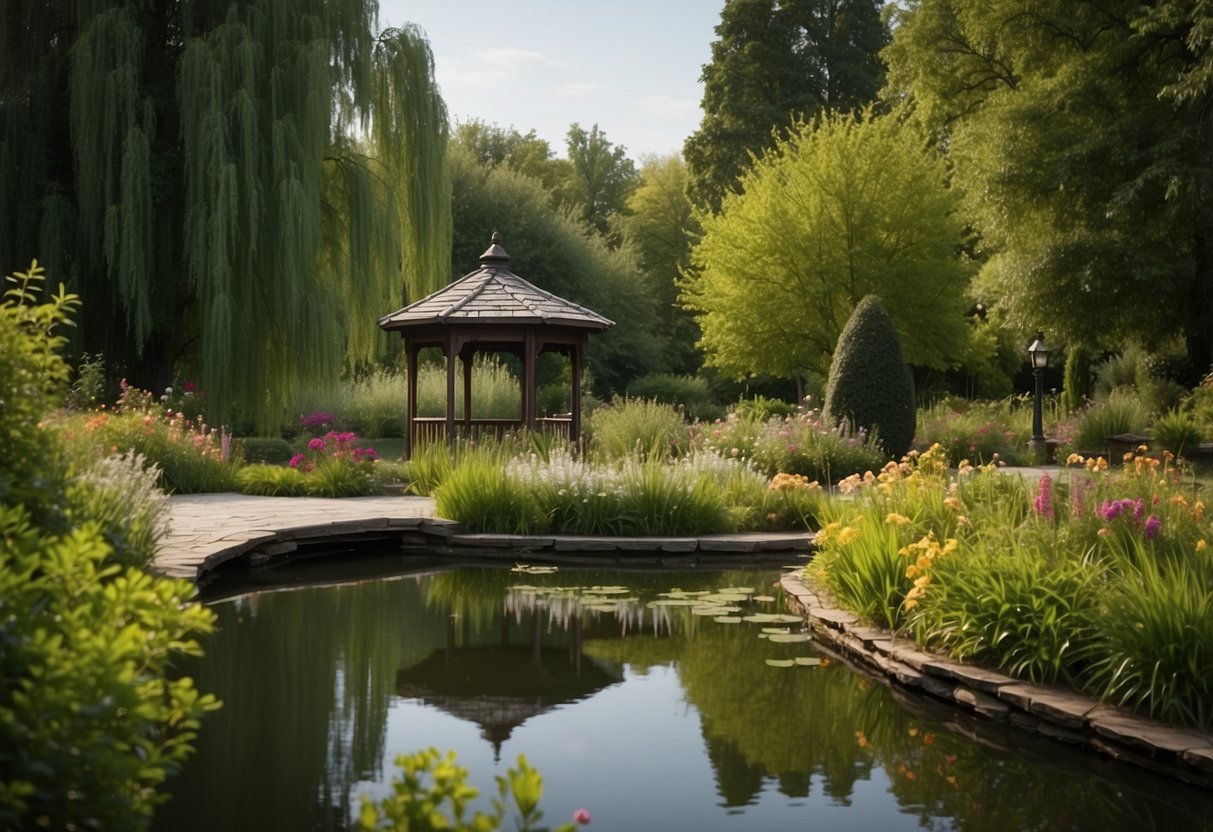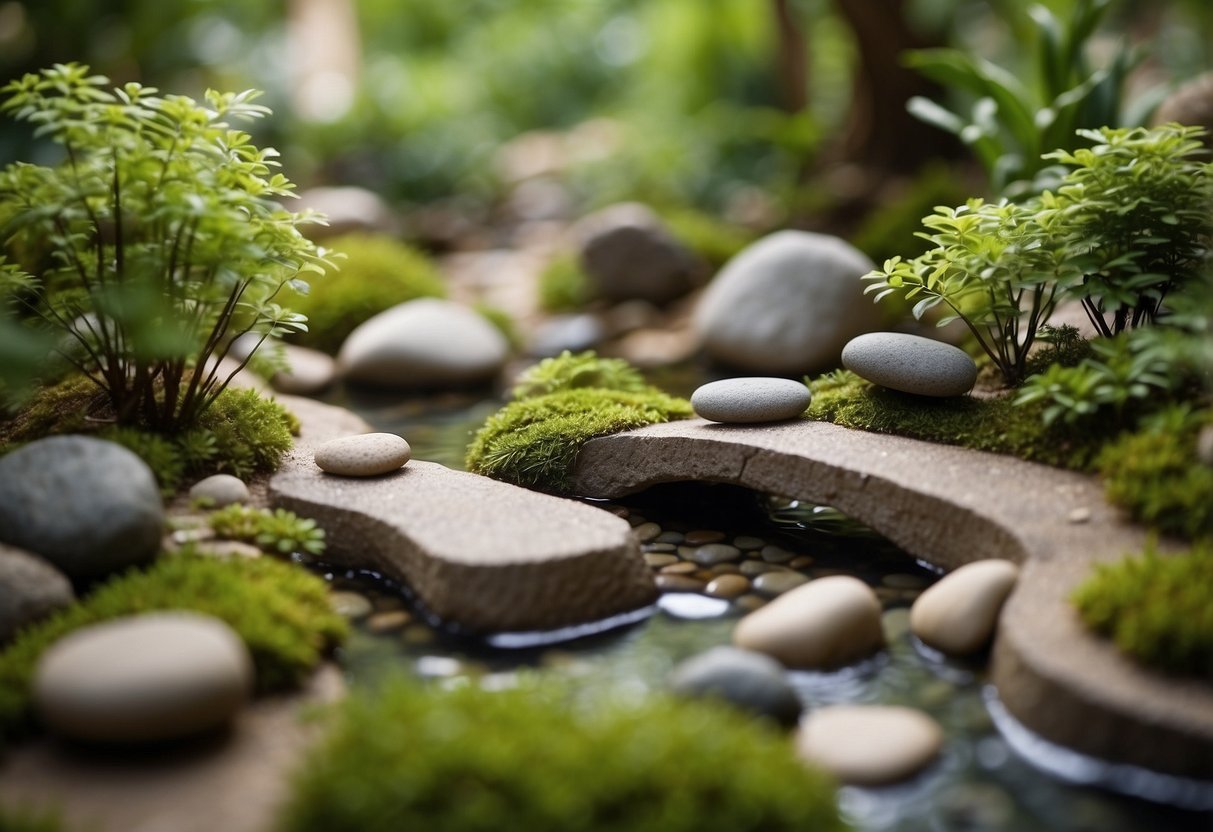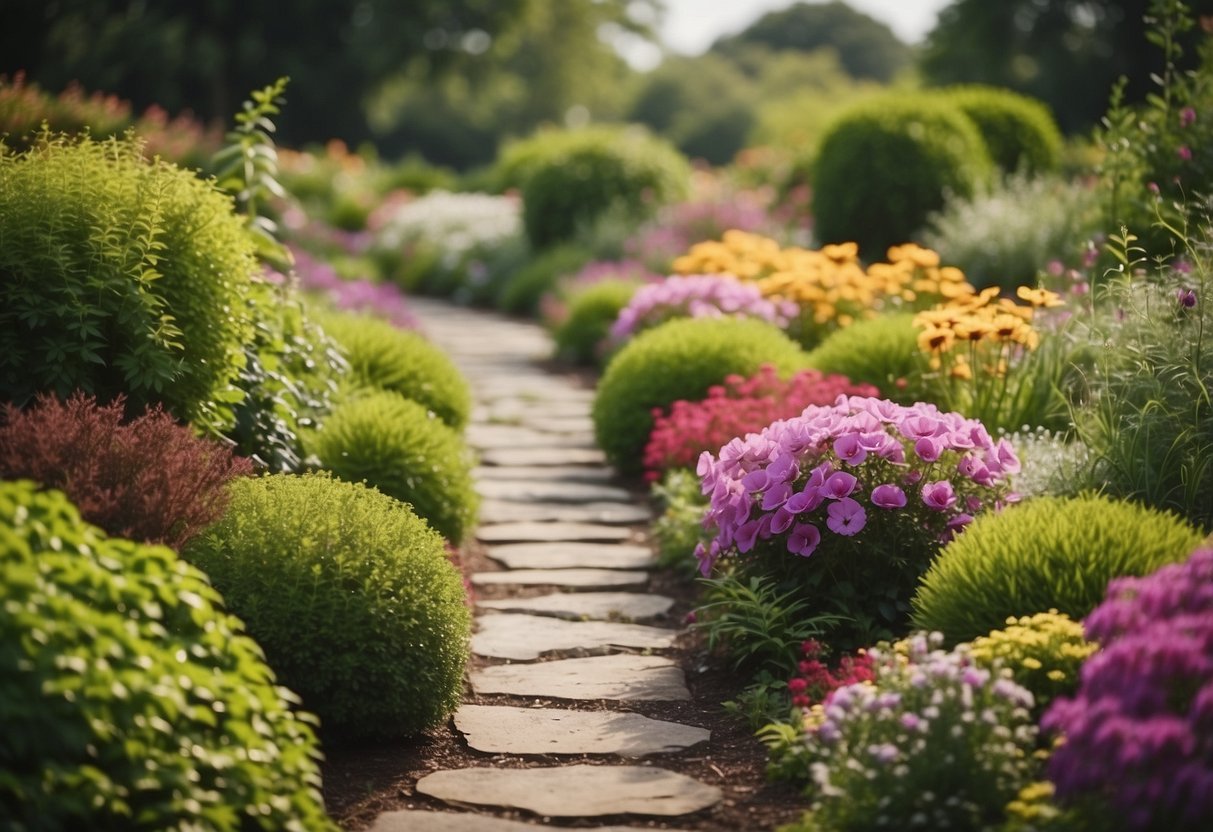Garden Island Ideas: Creative Tips for Your Outdoor Oasis
Creating a garden island can be a fantastic way to add interest and beauty to your outdoor space. These unique garden elements can transform an ordinary lawn into a captivating oasis. No matter the size of your backyard, garden islands offer endless possibilities for creativity and personalization.

What makes garden islands so appealing is their ability to serve as focal points in your garden. They can be designed to reflect your style, using various plants, flowers, and even decorative features like ponds or rock borders. If you’re looking to make your garden stand out, a well-planned garden island might be just what you need.
1) Herb Spiral

A herb spiral is a unique and efficient way to grow your herbs. It’s a raised garden bed built in a spiral shape. This design allows you to plant many types of herbs in a small space.
The spiral shape of the garden creates different microclimates. The top of the spiral is dryer and sunnier, perfect for herbs like rosemary and thyme. Lower levels get more shade and retain more moisture, making them ideal for mint and parsley.
Building a herb spiral can be an easy weekend project. You can use materials like stone or wood, which you might already have. It’s not only functional but also adds an attractive feature to your garden. Plus, it’s a great way to make the most out of your space. You can learn more about how to build one from Balcony Garden Web and Savvy Gardening.
2) Butterfly Garden Hub

Creating a Butterfly Garden Hub can bring vibrant life to your garden island. Plant nectar-rich flowers like coneflowers and lavender to attract adult butterflies. Incorporate milkweed and dill to provide food for caterpillars.
Ensure your garden gets plenty of sunlight, as butterflies prefer warm, sunny spots. Group plants in drifts to create expansive areas of color. This will make it easier for butterflies to find food.
Choose native plants to attract local butterfly species. Avoid exotic plants that might not be as appealing to them. Start planning in early spring for the best results. Learn more at Garden Design.
3) Mini Zen Garden

Creating a mini Zen garden is a fun way to bring calm and tranquility to your space. You’ll need a shallow container, sand, and a few tiny rocks or pebbles.
Use a small rake or even a fork to draw patterns in the sand. You can also add mini succulents or moss for a touch of green.
Get creative with tiny bridges or Bonsai plants. These elements can make your mini Zen garden unique and personal. Start small and see how peaceful and beautiful a tiny garden can be.
4) Vertical Succulent Garden

A vertical succulent garden is a great way to use small spaces and add some green to your home. You can use a wood shutter to make a planter by filling it with soil and adding succulents. It doesn’t take much maintenance.
Another idea is to use a slat wall with planters. This allows you to change the look of your yard and gives you more gardening space. Use vertical growers and low spillover varieties for a nice effect.
5) Bird Bath Oasis

Creating a Bird Bath Oasis can add charm and tranquility to your garden.
You can use a stone bird bath for a classic look. The natural appearance blends with flowers and bushes, making it a perfect fit. Explore more ideas at stone bird bath.
Another idea is a mosaic bird bath. Use colorful tiles or glass to craft patterns. This adds both functionality and beauty. For inspiration, check out mosaic bird bath.
6) Fairy Garden Corner

Creating a fairy garden corner adds a magical touch to your garden island. Start with a container, like a pot or terrarium, and fill it with soil. Small plants like moss or succulents work well.
Add miniature accessories such as fairy figurines and tiny mushrooms. Include a fairy garden house for a focal point. Ensure good drainage by adding a few holes to the container.
You can also use plants like ferns, creeping thyme, and vining plants such as morning glory or sweet peas. These create a lush, enchanting atmosphere reminiscent of a storybook setting.
7) Outdoor Kitchen Herb Garden

Imagine stepping out to your outdoor kitchen and grabbing fresh herbs straight from your garden.
You can plant herbs like basil, rosemary, and thyme in pots or a small raised bed near your cooking area.
Pick colorful pots for a vibrant look, or use a sleek wooden planter for a modern touch.
Fresh herbs will enhance your meals and add a green touch to your space.
8) Raised Vegetable Bed

Growing your own vegetables can be easier with a raised vegetable bed. Elevated beds provide better control over the soil quality and drainage. This can lead to healthier plants and bigger harvests.
You can use wood, metal, or even recycled materials to build your beds. Choose materials that suit your garden’s style and your own preferences.
Consider placing your raised beds in a sunny spot. Vegetables like tomatoes, peppers, and cucumbers thrive with plenty of sunlight. Raised beds can also help keep pests at bay, giving your plants a better chance to grow.
For more ideas, check out raised bed garden design.
9) Garden Path with Edging

You can transform your garden with a well-defined path and some stylish edging. Use materials like brick or pavers to create a neat and tidy look.
Cedar lumber is another great choice due to its resistance to decay and pests. It’s low-maintenance and long-lasting.
For a unique touch, try using glass bottles. Sink them neck-down into the soil for a colorful, eco-friendly border that catches the light.
10) Rock Garden

A rock garden can add a unique touch to your garden island. Use a mix of small and large stones to create different textures. Layering rocks can create a natural look.
Combine rocks with plants like sedums, thyme, and lavender. These plants thrive in well-drained areas and bring color to your rock garden.
Consider adding creeping groundcovers to soften the edges of the rocks. This can help blend the garden into the landscape. For more ideas, check out this collection of rock garden designs.
Benefits Of Garden Islands

Garden islands bring numerous advantages to your outdoor space, making it more enjoyable and eco-friendly. They enhance both visual appeal and natural diversity.
Enhanced Aesthetics
Garden islands can transform your yard into a visual delight. By adding a mix of flowers, shrubs, and trees, you create a vibrant focal point. They offer depth and layers, making even a simple lawn look captivating.
You can design your garden island to match the seasons. Spring bulbs, summer blooms, autumn foliage, and winter evergreens provide continuous interest. Adding a pathway or a small bench can make your garden island not only beautiful but also inviting.
Various textures and colors can be used to create contrast. Imagine tall grasses swaying in the breeze next to low-growing perennials. This diversity in plant height and form adds an appealing complexity to your garden. For ideas, you might consider these stunning designs.
Increased Biodiversity
Garden islands attract a variety of wildlife, from pollinators like bees and butterflies to birds and beneficial insects. A well-designed garden island can become a mini-ecosystem.
Including native plants will support local wildlife. For example, planting milkweed attracts monarch butterflies. Different plant species can cater to various creatures, creating a more dynamic environment. You can explore inspiring ideas to find suitable plants for your area.
This biodiversity can also improve the health of your garden. Beneficial insects help control pests naturally, reducing the need for chemical pesticides. By providing food and habitat, your garden island can play a key role in local conservation efforts.
Design Tips For Creating Garden Islands

Creating a garden island adds interest and variety to your outdoor space. Key steps include picking the best plants for your area and adding water features that enhance the design.
Choosing The Right Plants
Selecting the right plants is vital. You want a mix of colors, heights, and bloom times to keep your garden lively throughout the year. Evergreens provide a strong backbone, offering year-round structure.
Perennials are great for consistent color. Plants like daylilies and hostas come back every year with little maintenance, making them a great choice. To add seasonal interest, mix in annuals like petunias or marigolds. These need to be replanted each year but offer a burst of vibrant color.
Native plants are also a smart pick. They are adapted to your local climate and soil, needing less water and care. This makes them environmentally friendly and budget-friendly. Consider plants like purple coneflower or black-eyed Susan.
Incorporating Water Features
Water features enhance the garden island’s ambience. A small pond basin can be a focal point, bringing both visual and auditory appeal to your space. Surrounding the basin with plants like water lilies or lotus can create a serene miniature ecosystem.
If you prefer moving water, a small fountain can add a lively touch. The sound of splashing water can be very calming. Birdbaths are another option, providing a habitat for local birds and adding a charming element to your garden.
Safety is important. Keep your water feature shallow, especially if small children will be around. Regular maintenance is necessary to prevent algae buildup and ensure pumps and filters are working correctly.
Maintenance And Care For Garden Islands

Maintaining a garden island involves regular seasonal upkeep and effective pest control strategies to ensure the garden stays healthy and vibrant year-round.
Seasonal Upkeep
To keep your garden island thriving throughout the year, you must adapt your care routine to the changing seasons. In spring, focus on planting new flowers and trimming any dead branches or leaves. Mulching around your plants helps retain moisture and control weeds.
During summer, water your garden island regularly, preferably in the early morning or late evening. Use mulch to help your soil retain moisture and protect plant roots from extreme heat. Deadhead flowers to encourage more blooms.
In autumn, it’s time to clean up fallen leaves and prepare the garden for winter. Pruning perennials and adding another layer of mulch can protect roots from the cold. Consider planting bulbs for early spring blossoms.
For winter, cut back on watering as most plants enter dormancy. Cover sensitive plants with burlap or frost cloth to protect them from freezing temperatures. Remove any debris that might harbor pests or diseases.
Pest Control Strategies
Keeping pests at bay is essential for a healthy garden island. Start by encouraging beneficial insects like ladybugs and spiders, which naturally reduce pest populations. You can use companion planting, such as marigolds, which repel many common garden insects.
Regularly inspect your plants for signs of pests. Look for chewed leaves, yellowing foliage, or sticky residue. If you notice these, act quickly. Handpick larger pests or use a water spray to dislodge them.
For persistent issues, you may need to use organic pest control methods. Neem oil and insecticidal soap are effective against many insects and are safe for plants. Avoid chemical pesticides as they can harm beneficial insects and disrupt your garden’s ecosystem.
Maintaining healthy soil through composting and proper fertilization can also deter pests. Healthy plants are less likely to succumb to infestations.







